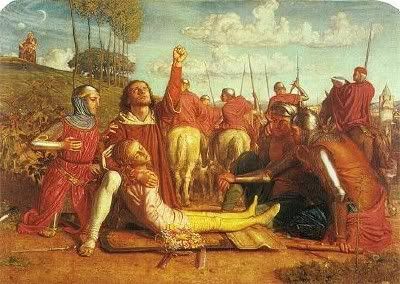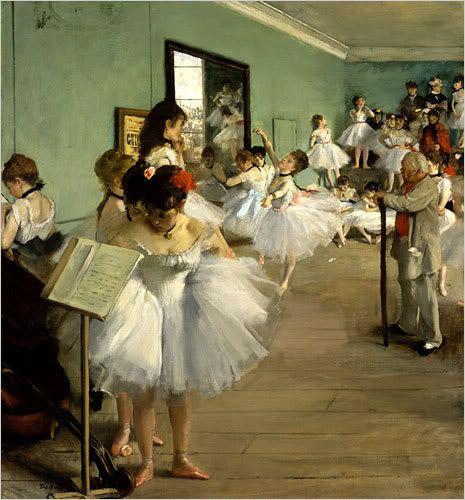
First of all, I've been a little neglectful of this blog over the last week! I just started a new job and I've been quite busy. I have a hard time writing when I don't have the time to be inspired, but I suppose that's something I'll just have to work on!
Speaking of "uninspired," I must confess that this William Holman Hunt's "The Awakening Conscience" is probably my least favourite Pre-Raphaelite painting. By far. I've always found it incredibly ugly, since the first time I saw it. That being said, I must confess that it's a very visually arresting work.
The technicolor color scheme is jarring to the senses, like many of Hunt's pieces. The subject itself seems rather tawdry, even today! I also can't help but think that the image of the fallen woman seems hoplessly Victorian. Apparently, the work was inspired by a "fallen woman" that Hunt had attempted to guide toward the straight and narrow (unsuccessfully).
While doing a little reading about the painting in Tim Barringer's The Pre-Raphaelites, I came across a copy of the song that is on the young woman's piano. You can see the title, "Oft in the Stilly Night" on the music. I thought the words were rather interesting, and seem to add an extra element to the painting that made me appreciate it a little bit more.
Oft, in the stilly night,
Ere Slumber's chain has bound me,
Fond Memory brings the light
Of other days around me;
The smiles, the tears,
Of boyhood's years,
The words of love then spoken;
The eyes that shone,
Now dimm'd and gone,
The cheerful hearts now broken!
Thus, in the stilly night,
Ere Slumber's chain hath bound me,
Sad Memory brings the light
Of other days around me.
Do any of you like this painting? I'd be really interested to hear what others have to say about it.

















